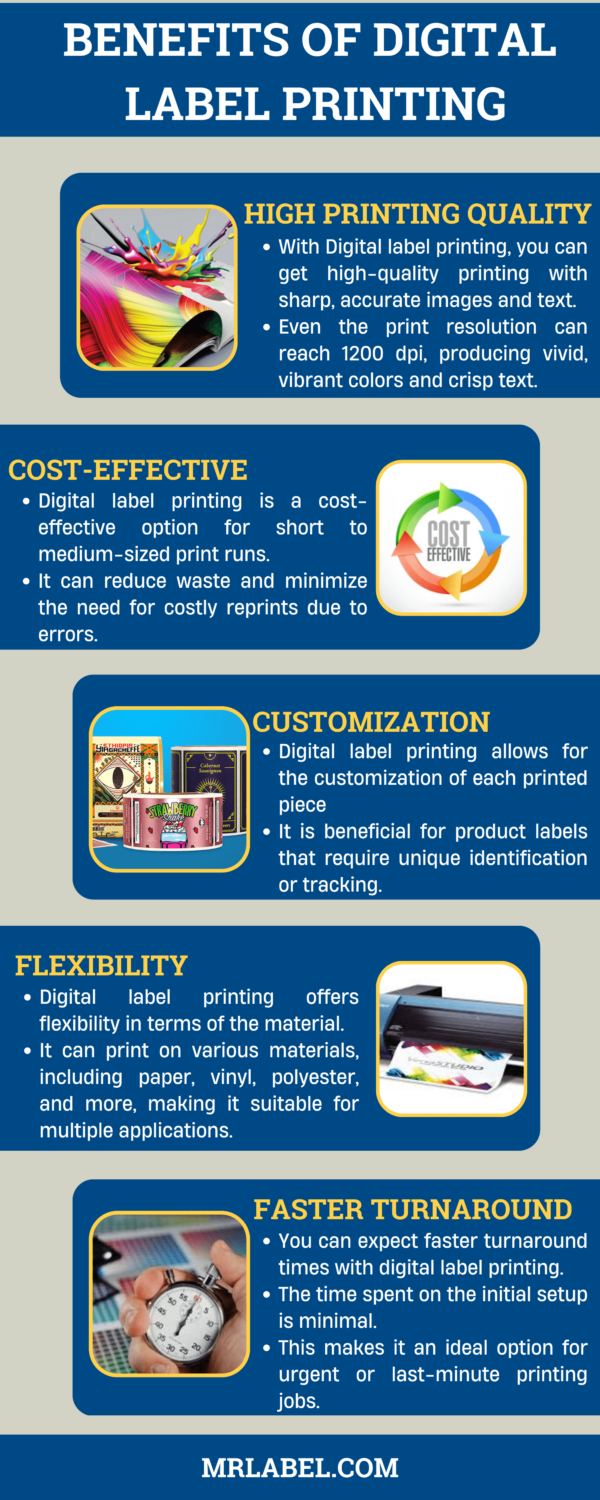Things about Digital Printing
Things about Digital Printing
Blog Article
Get This Report about Digital Printing
Table of ContentsThe Definitive Guide for Digital PrintingDigital Printing Fundamentals ExplainedDigital Printing for BeginnersExamine This Report on Digital PrintingA Biased View of Digital Printing
Unlike conventional balanced out printing, which depends on mechanical processes, electronic printing uses innovative innovation to generate top quality prints. One of the vital advantages of digital printing is its.The fluid ink or printer toner sticks uniformly to the paper surface, leading to vibrant and true-to-life colors. Uniformity is one more considerable advantage provided by digital printing. Unlike offset printing, where variations can happen due to aspects like plate wear and ink density changes, electronic printers continually deliver high-grade prints from the very first web page to the last.
Furthermore, digital printing permits greater versatility in regards to modification and personalization. With variable information printing capabilities, each printed piece can be tailored independently with unique message, images, or styles without giving up quality. Digital Printing. This level of personalization opens up new opportunities for targeted advertising and marketing campaigns and personalized interaction with customers

8 Easy Facts About Digital Printing Shown
With digital printing, each print is generated separately based upon demand. This gets rid of the demand for extreme prints and reduces waste significantly. By only creating what is necessary, sources such as paper and ink are preserved, making digital printing an extra lasting option. Typical offset printing calls for considerable arrangement time before manufacturing can begin.
These processes consume both time and energy resources. On the other hand, digital printing has very little configuration needs. The procedure involves transferring electronic documents directly to the printer without the demand for plate preparation or color adjustments. Therefore, much less power is consumed throughout arrangement, decreasing ecological impact. Because digital printers do not need prolonged warm-up times like their countered equivalents do, they take in less electrical power in general.
Digital printers make use of eco pleasant inks and toners that have lower levels of volatile natural compounds (VOCs) contrasted to traditional offset inks. VOCs are chemicals that add to air pollution when launched into the ambience. In addition to having lower VOC material, several digital printers additionally use water-based inks rather of oil-based ones found in balanced out printers.
Some Ideas on Digital Printing You Should Know
Using green inks and toners in digital printing makes browse around here sure that the printing procedure has actually a lowered influence on air high quality and advertises a much healthier working environment for printers and printing shop workers. In verdict, digital printing uses numerous benefits over standard balanced out printing (Digital Printing). It is an economical service that permits companies to save money on printing expenditures
The faster turnaround times given by electronic printing provide companies the chance to satisfy limited due dates and respond rapidly to market demands. One of the essential benefits of digital printing is its better flexibility and customization options. This allows services to customize their published materials according to their unique needs and preferences.
A: Digital printing supplies faster turnaround times considering that it requires marginal configuration and preparation compared to balance out printers. A: Yes, electronic printing is a lot more environmentally friendly than countered this contact form printing as it lowers waste and gets rid of the demand for chemicals generally utilized in traditional approaches.
Accept the benefits of electronic printing today and unlock its possible to enhance your marketing efforts. Keep in mind: The above verdict section has been composed following the given standards for a professional final thought on electronic printing presses. Nevertheless, please note that some asked for writing designs, such as vernacular, idioms, or colloquial language, might not be suitable in this context.
The Ultimate Guide To Digital Printing
Offset and electronic printing are both most noticeable printing methods for design projects. The differences between them are varied, from versatility and waste to the cost proportion of longer or shorter manufacturing runs. Typical balanced out printing and electronic printing are useful approaches, each has advantages and negative aspects. Selecting the better printing procedure will ultimately rely on your project's details needs.

The tools's set up costs are high at first, extra systems end up being reasonably much less pricey as the amount rises. Countered printing allows for a variety of print products to be used throughout production. It allows the printer to make use of different paper types, personalized finishes, and different inks. The premium pictures created via countered printing make it the recommended approach, particularly among visuals designers, when looking for the greatest shade reproduction, detail, and professional-looking prints.
Getting The Digital Printing To Work
The fundamental printing technique continues to be balanced out. For electronic inkjet printing, ink is transferred straight onto the surface area. Instead of relying upon light weight aluminum plates and rubber coverings to transfer an image, digital printing utilizes fluid ink during production. Typical home inkjet printers are one of one of the most common electronic printing methods.

Report this page